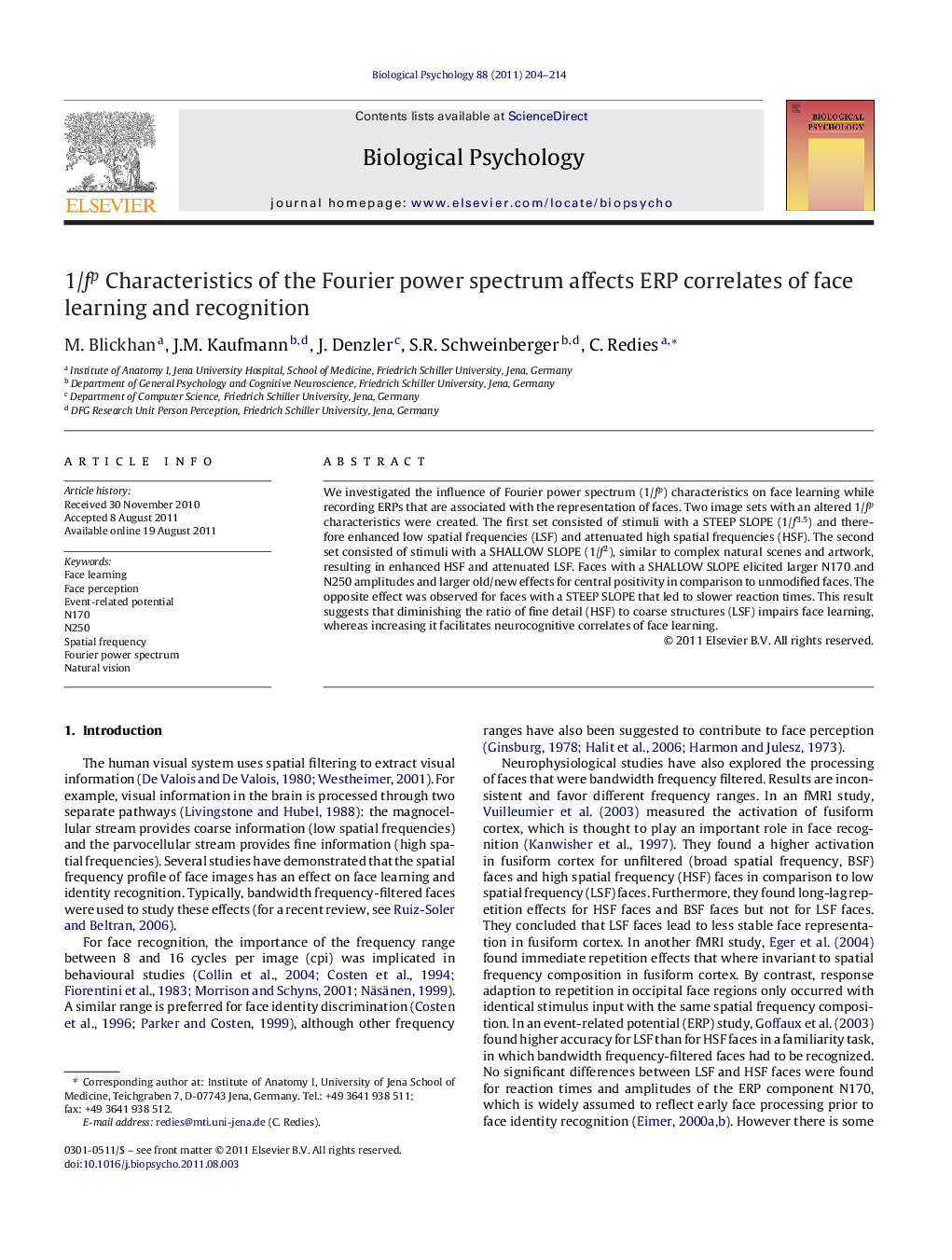| Article ID | Journal | Published Year | Pages | File Type |
|---|---|---|---|---|
| 921121 | Biological Psychology | 2011 | 11 Pages |
We investigated the influence of Fourier power spectrum (1/fp) characteristics on face learning while recording ERPs that are associated with the representation of faces. Two image sets with an altered 1/fp characteristics were created. The first set consisted of stimuli with a STEEP SLOPE (1/f3.5) and therefore enhanced low spatial frequencies (LSF) and attenuated high spatial frequencies (HSF). The second set consisted of stimuli with a SHALLOW SLOPE (1/f2), similar to complex natural scenes and artwork, resulting in enhanced HSF and attenuated LSF. Faces with a SHALLOW SLOPE elicited larger N170 and N250 amplitudes and larger old/new effects for central positivity in comparison to unmodified faces. The opposite effect was observed for faces with a STEEP SLOPE that led to slower reaction times. This result suggests that diminishing the ratio of fine detail (HSF) to coarse structures (LSF) impairs face learning, whereas increasing it facilitates neurocognitive correlates of face learning.
► We study the influence of the Fourier characteristics (1/fp) on face learning. ► ERP correlates of face perception were analyzed (N170, N250, central positivity). ► Diminishing the ratio of fine detail (high spatial frequencies) to coarse structures (low spatial frequencies) impairs face learning. ► Increasing the ratio of fine detail to coarse structures, similar to natural scenes, facilitates face learning.
